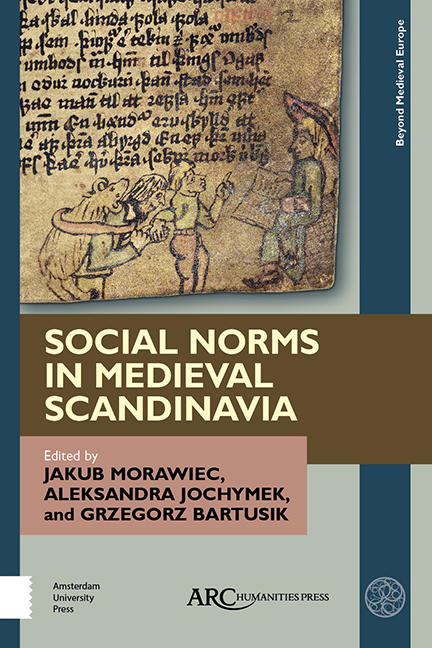Chapter 5 - Friendship and Man’s Reputation: A Case of Odds þáttr Ófeigssonar
Published online by Cambridge University Press: 20 November 2020
Summary
THERE IS NO doubt that in medieval Scandinavian society reputation was a primary consideration. It often served as the motivator for blood feuds, complicated lawsuits, and extended negotiations. The honour of the people and the family was to be protected at all costs, and we can trace many interesting examples in the course of reading the old Icelandic sagas. Those vendettas and judicial battles in defence of honour could be explained by, among other things, exceptionally strong bonds between family members, loyalty, and the firm belief that one could not survive outside the supporting clan. These obligations were often extended to foster-children and close friends.
There were two main types of friendship in medieval Scandinavia. Helgi Þorláksson distinguishes emotional friendship— a relationship principally based on affection— and pragmatic, mutually beneficial, friendship. The first kind of connection was unconditional and durable, lasting in spite of adversity. The latter was in need of constant renewal by reciprocal gift-giving or feasts, and could be terminated if it was no longer beneficial. Jón Viðar Sigurðsson uses different terms of reference to distinguish between relationships based on friendship in vertical (superior-subordinate connection) and horizontal relations (between equals).
In this chapter I discuss the idea of friendship and the value of a man's reputation. The case study is based on one of the þættir preserved in the Morkinskinna, the oldest collection of the kings’ sagas. The tale is called Odds þáttr Ófeigssonar and it is a story of an Icelandic merchant, Oddr Ófeigsson.
The text contained in the Morkinskinna is partially unreadable. Missing fragments are usually supplied on the basis of the younger manuscript, Flateyjarbók. Placed in the saga of King Haraldr immediately after Stúfs þáttr and not far from Sneglu-Halla þáttr, this story creates a counterweight to descriptions of naval battles and sublime poems of the court skalds, ipso facto preceding the series of stories of the invincible Icelanders. There are no female characters in the Odds þáttr, hence the focus on male friendship and reputation.
Although the matter of the generic identity of þættir (sing. þáttr) is still debatable, for reasons of clarity and in order to prevent ambiguities I use the term þáttr to mean “short narrative in medieval Icelandic prose.”
- Type
- Chapter
- Information
- Social Norms in Medieval Scandinavia , pp. 91 - 100Publisher: Amsterdam University PressPrint publication year: 2019



